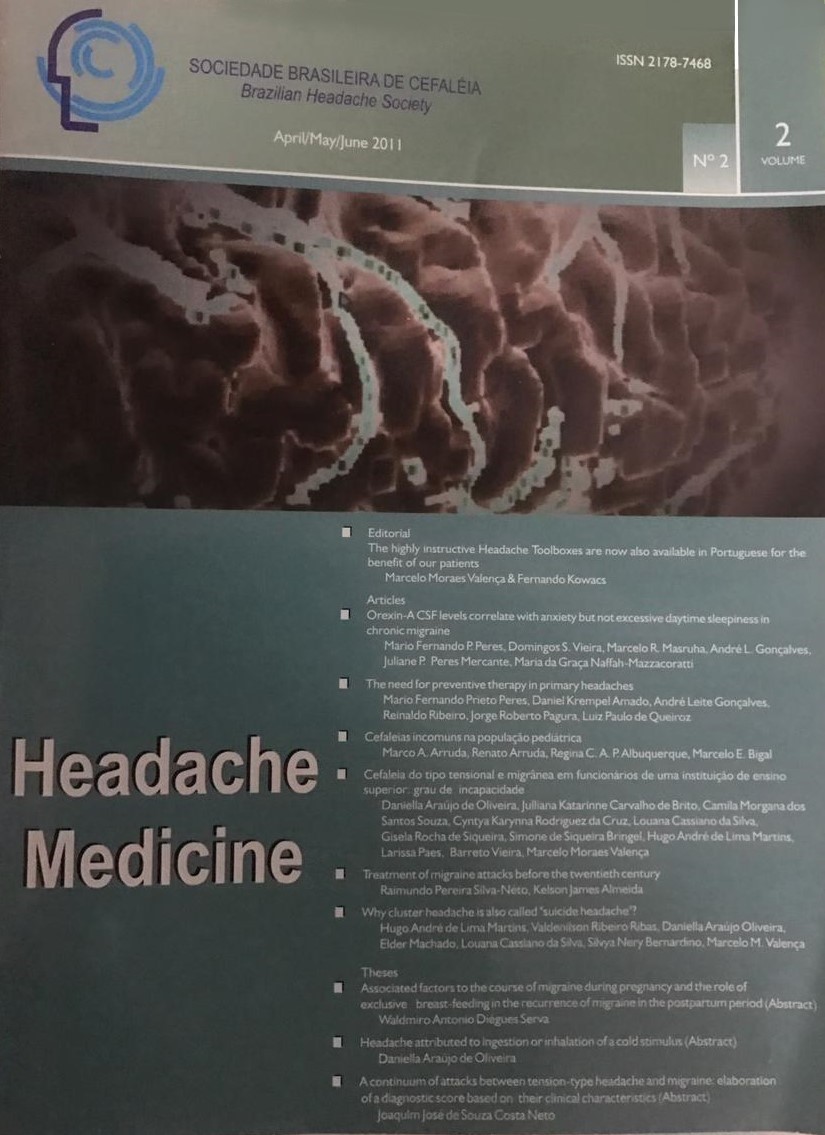The need for preventive therapy in primary headaches
DOI:
https://doi.org/10.48208/HeadacheMed.2011.10Keywords:
Migraine, Tension-type headache, Prevention, epidemiologyAbstract
Introduction: Primary headaches are common conditions. In Brazil, the prevalence of migraine is 15.2%, tension-type headache 13% and chronic daily headache (CDH) 6.9%. Although frequent disorders a proportion of patients are undertreated. Patients patterns of headache care can trend toward acute medication only and those in need of prevention may not receive it. Objective: To estimate the rates of preventive treatment in primary headache sufferers. Methods: A telephone interview containing questions about headache and socio-demographic characteristics was applied to 3,848 people from 27 States of Brazil, in its five geographical regions. We considered MIDAS > 10 points as a marker for the need of preventive treatment. Patients were asked if they were taking any medication on a daily basis or any treatment to prevent headaches from happening. Subjects were divided into: 1. Those who responded positively for the question regarding preventive treatment regardless of the treatment type. 2. Those who responded positively for the question, but only medications or treatments studied for migraine prevention, labeled as "Correct treatment" 3. Those who responded positively for the question, but only medications or treatments from the prevention consensus (Brazilian Headache Society), labeled as "Consensus treatment" Results: In total, 12.8% of primary headache sufferers had MIDAS higher than 10, meeting criteria for prophylactic treatment, but only 8.4% of them reported it, 3.9% were using a right preventive treatment. The percentage of patients in need for prevention was 24.7% in migraine, 15.6 % in probable migraine, 5 % for tension-type headache (TTH) and 4% for probable TTH. Only 2.6% of migraineurs, 7.5% of probable migraine patients, 4.3% of tension-type headache and 0% of probable TTH received proper preventive treatment Conclusion: Primary headaches are common, debilitating conditions but a substantial proportion of those who might need prevention do not receive it. Patient education, public health initiatives in order to deliver migraine and other primary headaches treatment for the general population should be considered not only in Brazil, but worldwide.
Downloads
Published
How to Cite
Issue
Section
License
Copyright (c) 2011 Headache Medicine

This work is licensed under a Creative Commons Attribution 4.0 International License.













